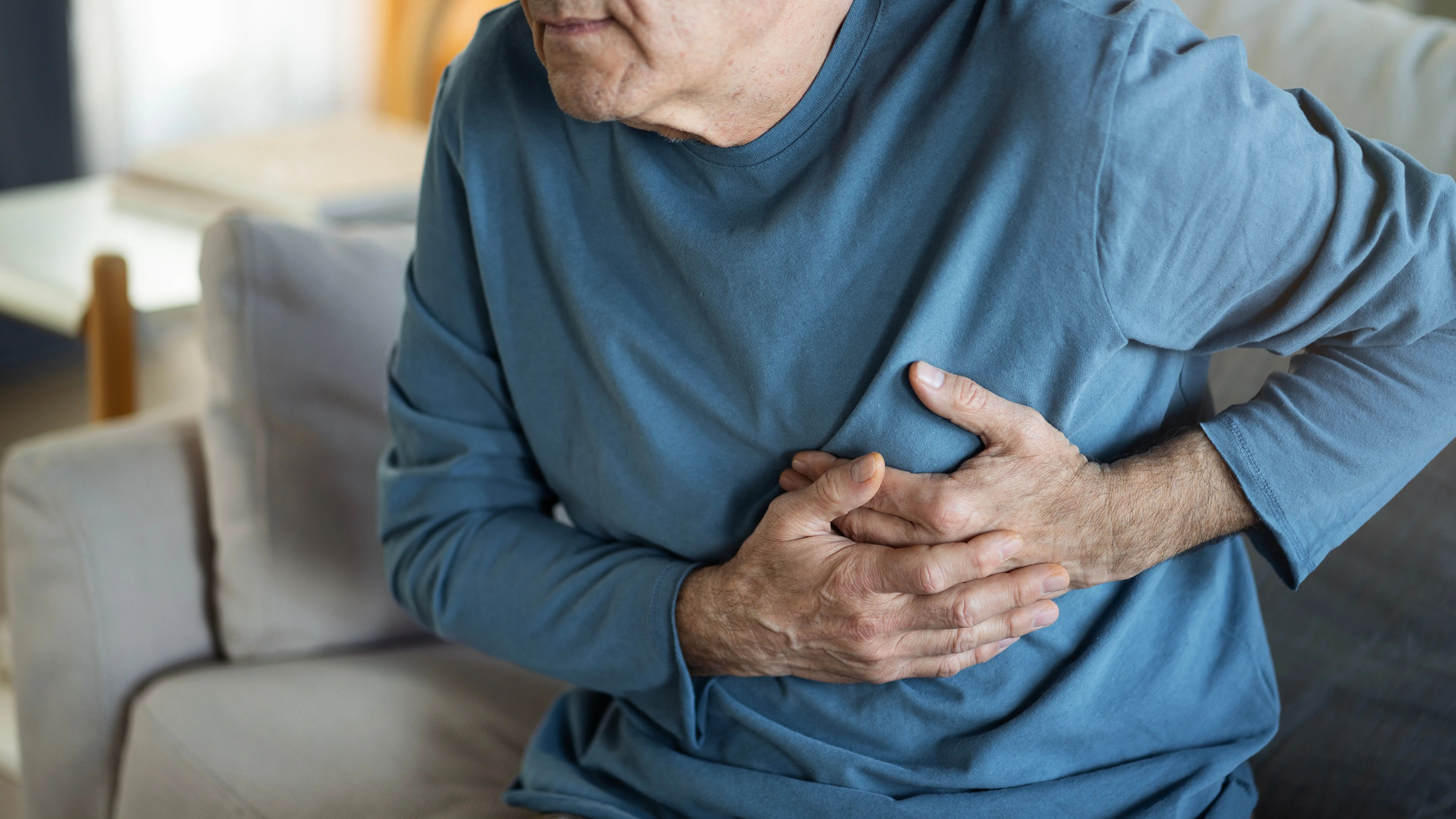Gas Gangrene Treatment & Prevention
Learn about gas gangrene, its causes, symptoms, treatment and prevention. Discover the importance of early detection, surgical interventions, for successful recovery.

Written by Dr Shreya Sarkar
Last updated on 3rd Jul, 2025
Gas gangrene, also known as clostridial myonecrosis, is a life-threatening situation caused by the Clostridium bacteria, especially C. perfringens. These bacteria produce toxins that rapidly destroy the muscle tissue, blood vessels, and blood cells. This infection usually appears following a serious injury like a gunshot, an accident, or a bad surgery. Moreover, certain existing health conditions like diabetes, colon cancer, and blood vessel illnesses that weaken the immune system further increase the risk. Also, Clostridium bacteria thrive in low-air environments, making deep wounds vulnerable as gas gangrene spreads quickly and can cause extreme pain, swelling, and skin discolouration, making quick medical intervention imperative to save lives.
Gas Gangrene Symptoms
Early detection of gas gangrene signs can make a big difference in how the situation turns out. Gas gangrene usually shows up as rapid pain, swelling, and changes in colour at the wound site. Some of the other signs are large, dark sores, skin that turns pale or purple, and fluid that smells bad. Crepitus is the sound of skin that crackles when touched and gets more challenging as the condition worsens.
If not treated promptly, the infection can rapidly worsen, causing severe tissue damage and complications. The spot may become necrotic (dead tissue), worsening pain and swelling. Systemic signs like fever, fast heart rate, and low blood pressure show that the illness has spread. Untreated, the illness can kill within hours.
Consult Top General Gastroenterologist
Diagnosis of Gas Gangrene
Treating and managing gas gangrene requires a quick and accurate evaluation. Here is how it is diagnosed –
- Physical Exam
A physical exam is the first step in the diagnosis. During this exam, doctors look for typical signs of the disease, such as boils, discolouration, and tissue death. Having gas in the tissues can be a perfect sign. The affected area will feel crackling when touched by the doctor.
- Lab Tests
Other diagnostics include X-rays, CT scans, and MRIs. These pictures can indicate tissue gas bubbles. Growing germs in a lab or colouring wound fluid might reveal the infection's source.
- Treatment Options for Gas Gangrene
Gas gangrene requires rapid medical attention to prevent infection and catastrophic complications. Here are the main treatment options available –
- Surgery
Gas gangrene treatment begins with surgical tissue removal. Cutting away dead tissue prevents infection and speeds up wound healing. In some cases, amputation of the affected limb is required to prevent further complications.
- Antibiotic
Treatment for gas gangrene requires high-dose antibiotics like penicillin and clindamycin. They target bacteria's cell walls and inhibit toxin production. As a result, they save the body from the poison produced by these bacteria.
- Hyperbaric Oxygen Therapy
Gas gangrene therapies include hyperbaric oxygen therapy (HBOT). Putting the patient in a 100% air chamber oxygenates tissues. This oxygen-rich environment reduces bacteria growth, promotes tissue repair, and neutralises clostridium toxins.
- Multidisciplinary Treatment
In extreme situations, doctors, especially infectious disease experts and wound care experts, must work together for optimum results. Together, they form the course of treatment that takes a holistic approach and ensures quick recovery of the patients from all complications. Sometimes, these experts bring medicine experts on board to provide comprehensive treatment.
Complications Associated with Gas Gangrene
Gas gangrene can worsen despite treatment, affecting both current health and long-term well-being. Without prompt treatment, gas gangrene can cause sepsis, organ failure, and septic shock. The rapid loss of red blood cells might prohibit the kidneys from removing toxins. If left untreated, the disease can spread to the bloodstream, causing widespread discomfort throughout the body. In the long run, patients may become incapacitated if they need an amputation.
The mental health challenges are another facet of this condition. The stress and anxiety that it brings is paramount, and it impedes the healing.
However, with effective support from loved ones and proper treatment, people can overcome these hurdles and return to normal life.
Prevention Strategies
Stopping gas gangrene is the most effective way to reduce the risk after surgery or injury. Here are the prevention methods –
- Taking Care of the Wound
Proper wound management is essential to prevent the spreading of bacteria. This includes cleaning the wound properly with clean water and antiseptic solutions. Also, to prevent contamination, one needs to clear all the debris from the wound and cover it with sterile dressings.
- Taking Necessary Vaccines
Vaccination plays a crucial role in reducing the risk of infections caused by Clostridium bacteria. While there is no direct vaccine against gas gangrene, certain immunisations help lower the overall risk –
- Tetanus Vaccine: Since Clostridium tetani is related to C. perfringens, maintaining up-to-date tetanus immunisation can help reduce bacterial complications in wounds.
- Pneumococcal and Influenza Vaccines help prevent respiratory infections, which can weaken the immune system and make individuals more susceptible to secondary bacterial infections.
- Following Hygiene Techniques
When handling the wound, individuals must maintain basic hygiene practices like washing their hands before and after, using clean and sterilised cloths and equipment, etc. Also, it is ideal if the individual treating the wound wears gloves. Also, people working in sectors like construction, manufacturing, agriculture, etc., must have a basic understanding of this process to ensure quick first aid.
Prognosis for Gas Gangrene Patients
The prognosis of gas gangrene changes based on the promptness of the treatment and the extent of the injury/infection. In cases where treatment begins early, and the injury/infection is localised, patients can recover with minimal long-term effects. Otherwise, there are serious complications await.
Several factors can impact the prognosis of a gas gangrene, including –
- Timing of medical intervention
- Nature and severity of the infection
- Age and overall health condition of the patient
Role of Lifestyle and Nutrition
Adjusting lifestyle and nutritional choices can help speed up the recovery process. In terms of dietary choices, patients should consume enough vitamins, minerals, and antioxidants to strengthen their immune system. Plants, nutritious grains, lean meats, and fruits help the body fight infections and heal cuts faster.
On the other hand, to reduce the risk of gas gangrene, individuals should avoid unsafe activities and maintain basic hygiene. Regular exercise and cleanliness goes a long way to help the patient recover faster to the normal life.
Case Studies and Real-life Experiences
Many gas gangrene survivors write about their hard and pleasant experiences in treatment. These cases demonstrate the importance of early detection, prompt treatment, and mental and physical recovery. Additionally, medical professionals' case studies reveal that surgery, drugs, and hyperbaric oxygen therapy prove to be fruitful. Together, these reading materials create awareness and help individuals manage such crisis situations better and prevent fatalities.
Conclusion
Gas gangrene is deadly, so immediate medical attention is imperative. The speed of diagnosing and treating gas gangrene affects outcomes. Early intervention reduces complications and increases mortality. Treatment mostly involves surgery, medications, and hyperbaric oxygen therapy, but regular hygiene practices and a balanced diet also aid this process. Together, they help the individual get back to normal life quicker.
Consult Top General Gastroenterologist
Consult Top General Gastroenterologist

Dr. Sanjay Sikka
Gastroenterology/gi Medicine Specialist
35 Years • MBBS, MD(Med), FACG
Delhi
Apollo Hospitals Indraprastha, Delhi
(200+ Patients)

Dr. Sunil Kaul
General Surgeon
30 Years • MBBS, MS, FICS, FIMSA, FMAS
Delhi
Apollo Hospitals Indraprastha, Delhi
(25+ Patients)

Dr. Ankit Vijay Agarwal
Gastroenterology/gi Medicine Specialist
14 Years • MBBS(Osmania), DNB(Internal Medicine ), DM ( Osmania) Consultant Gastroenterologist, Hepatologist and Advanced Therapeutic Endoscopist
Hyderabad
Apollo Hospitals Jubilee Hills, Hyderabad
Dr. Sasikamalam
General Practitioner
1 Years • MBBS
COIMBATORE
Apollo Sugar Clinic Coimbatore, COIMBATORE

Prof Dr Pawanindra Lal
Minimal Access/Surgical Gastroenterology
31 Years • MS, DNB, FCLS, FRCS(Ed,Glasg,Eng,Irel), FACS, FAMS, FFSTEd
Delhi
Apollo Hospitals Indraprastha, Delhi
(100+ Patients)
Consult Top General Gastroenterologist

Dr. Sanjay Sikka
Gastroenterology/gi Medicine Specialist
35 Years • MBBS, MD(Med), FACG
Delhi
Apollo Hospitals Indraprastha, Delhi
(200+ Patients)

Dr. Sunil Kaul
General Surgeon
30 Years • MBBS, MS, FICS, FIMSA, FMAS
Delhi
Apollo Hospitals Indraprastha, Delhi
(25+ Patients)

Dr. Ankit Vijay Agarwal
Gastroenterology/gi Medicine Specialist
14 Years • MBBS(Osmania), DNB(Internal Medicine ), DM ( Osmania) Consultant Gastroenterologist, Hepatologist and Advanced Therapeutic Endoscopist
Hyderabad
Apollo Hospitals Jubilee Hills, Hyderabad
Dr. Sasikamalam
General Practitioner
1 Years • MBBS
COIMBATORE
Apollo Sugar Clinic Coimbatore, COIMBATORE

Prof Dr Pawanindra Lal
Minimal Access/Surgical Gastroenterology
31 Years • MS, DNB, FCLS, FRCS(Ed,Glasg,Eng,Irel), FACS, FAMS, FFSTEd
Delhi
Apollo Hospitals Indraprastha, Delhi
(100+ Patients)




